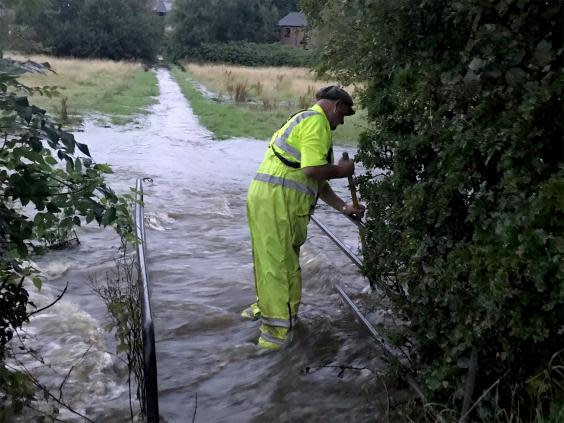UK weather: Heatwave continues as thunderstorms bring sudden flooding to Lancashire

Weather warnings remain in place across the UK on Tuesday with thunderstorms expected to bring heavy rains and potential flooding in some areas as the heatwave continues.
The torrential rain and thunderstorms seen overnight in Scotland and parts of northern England will push north on Tuesday morning, making way for patchier storms in the afternoon, according to the Met Office.
Warnings are in place around Lancashire after flooding overnight. Fire crews had been called out to more than 30 separate flooding-related incidents in Lancaster and nearby towns by Tuesday morning.
Many other areas have been placed on flood alert, particularly in the West Midlands and eastern parts of Wales.
Thunderstorms will form in the southeast early on Tuesday, pushing slowly north to hit parts of London by the mid-afternoon before drying out in the evening.

The Met Office forecasts that thunderstorms will continue through Thursday, with sunny spells giving way to increasing cloud cover in the later part of the week. Yellow weather warnings are in place across the UK until Friday.
Temperatures in the south east will continue their sweltering run in the mid-30s on Tuesday as the heatwave affecting much of the country persists.
Northern areas are likely to see temperatures peak in the high-20s on Tuesday, according to the Met Office.
By Thursday, England and Wales are in for cloudy, humid weather with the chance of thunderstorms in some areas and the south east will continue to see very hot temperatures, according to the Met Office.
Scotland is expected to see conditions brighten up in the later part of the week, so far avoiding the warnings affecting the rest of the UK.
Read more
What is heatstroke, what are the symptoms and how can it be treated?

 Yahoo News
Yahoo News 
